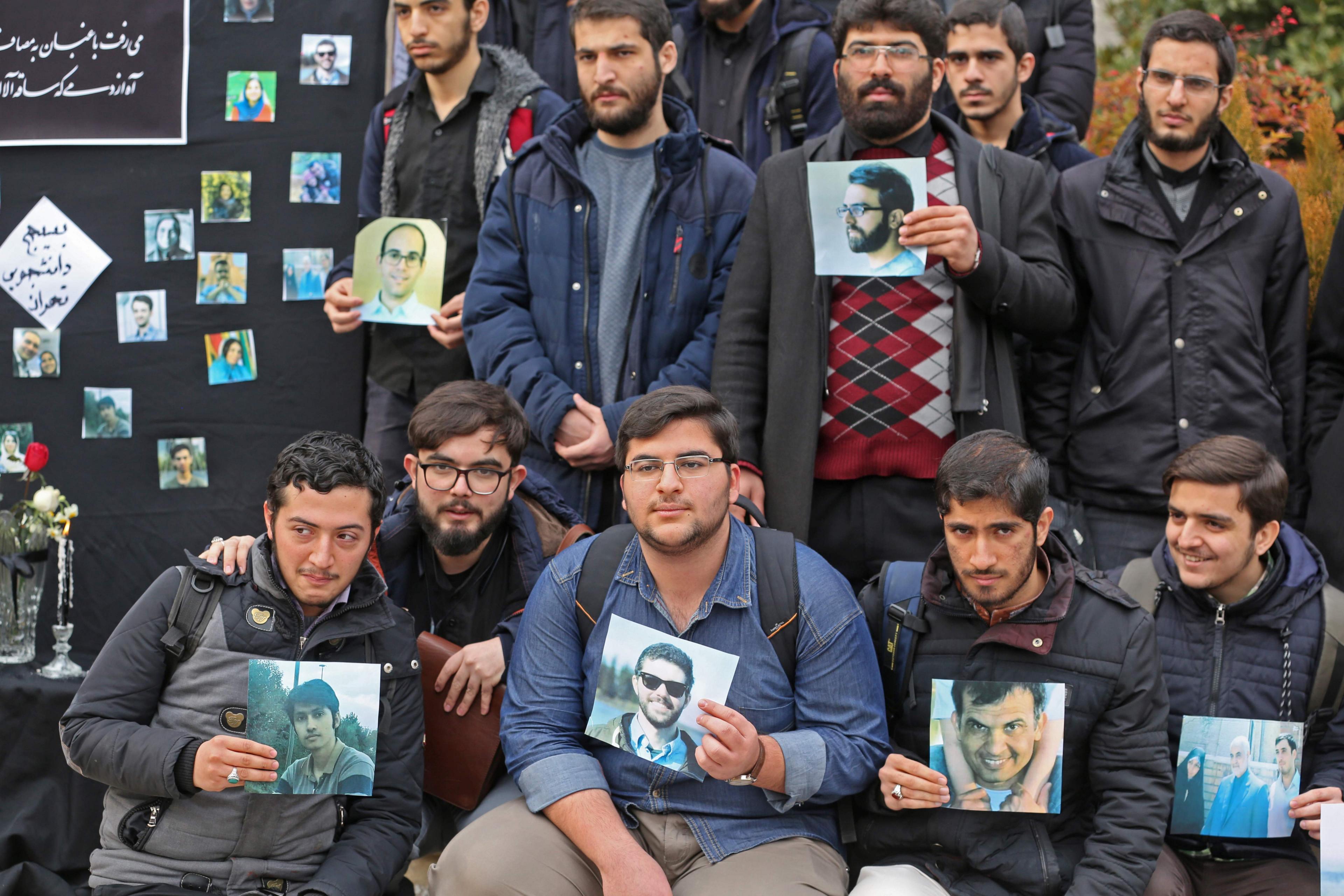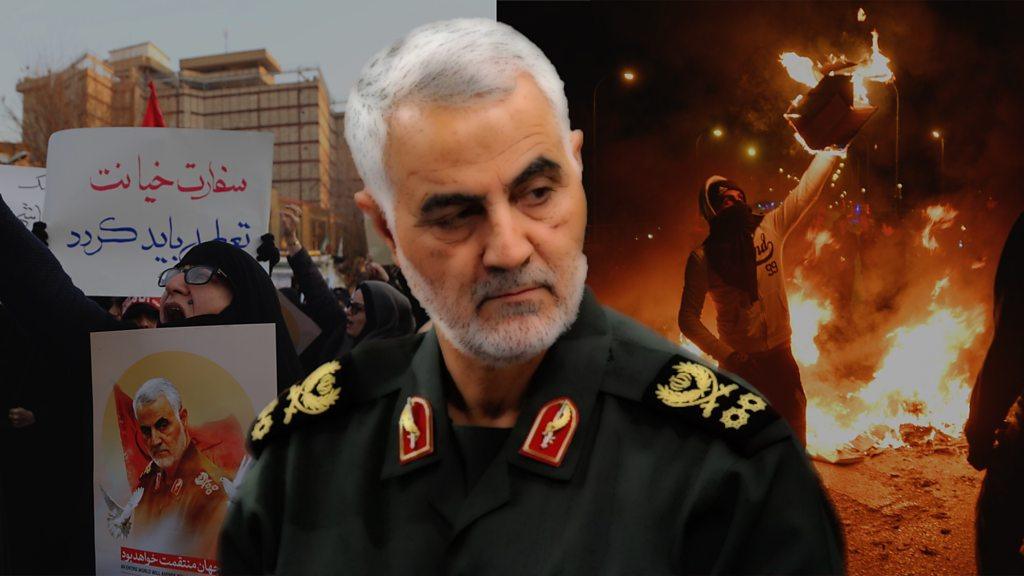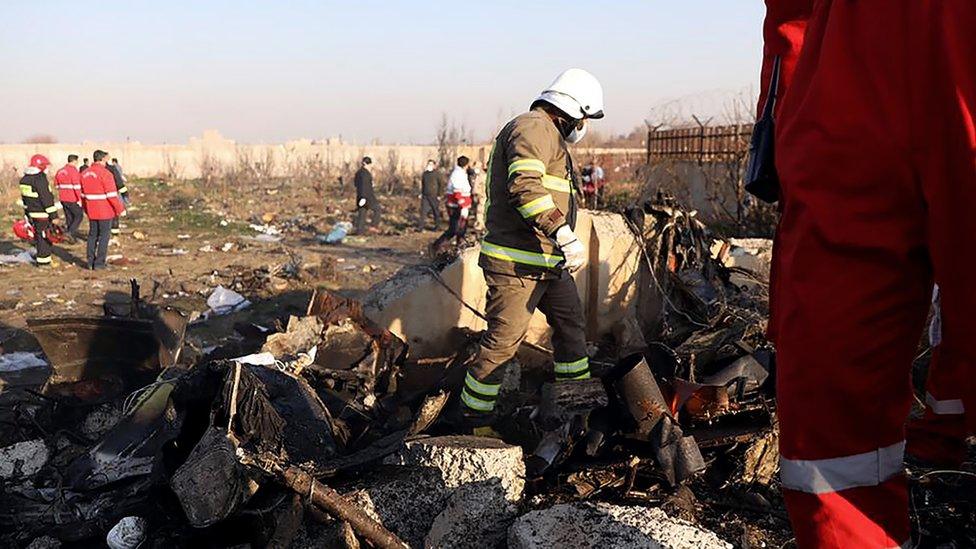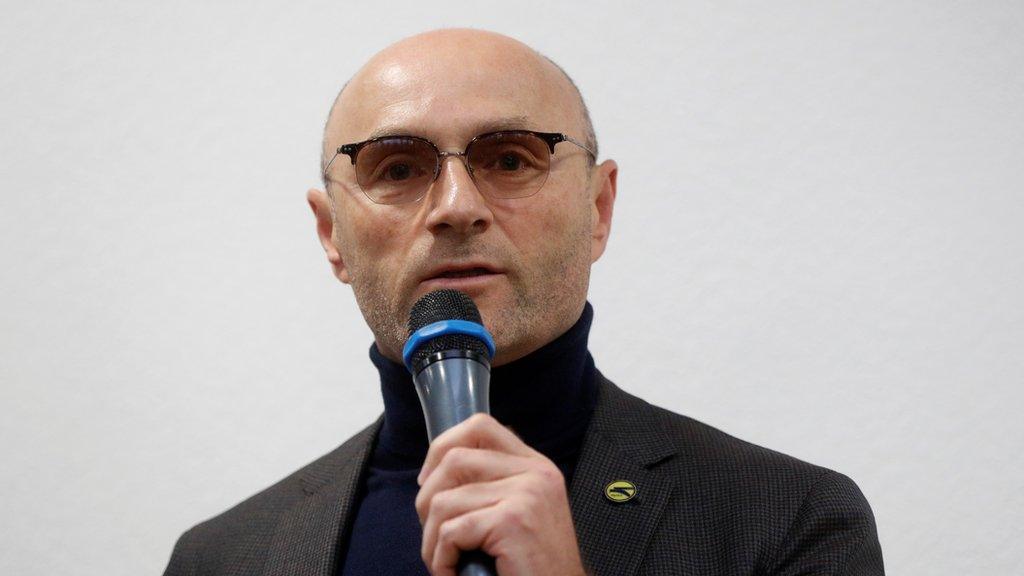Iran plane downing: President Rouhani calls on military to explain
- Published
Footage shows missile strike on Ukrainian plane in Iran
Iran's President Hassan Rouhani has said the country's military should elaborate more on how it shot down a passenger plane by mistake last week.
Separately, Foreign Minister Mohammad Javad Zarif acknowledged that Iranians "were lied to" for days afterwards.
He insisted that he and the president were also kept in the dark.
Iran's Revolutionary Guards killed 176 people when they "unintentionally" shot down the Ukrainian aircraft amid escalating tensions with the US.
Hours before, Iranian missiles had targeted two airbases in Iraq housing US forces.
Speaking on state television on Wednesday, President Rouhani called on the military to take the next steps of the investigation with "more coordination and monitoring".
"The first thing is to inform people honestly. People's grief will alleviate when they know that we feel responsible for what happened and talk with them honestly," he said.
He urged the forces "to explain to people what sessions and meetings were held since the moment that the incident happened".
Mr Zarif, during a televised interview while on a trip to India, said: "I and the president did not know [what brought the plane down] and, as soon as we did, we communicated it."
He also praised the military for being "brave enough to claim responsibility early on". However, critics have decried the three-day delay and said they only owned up after Western authorities claimed to have contrary evidence.

University of Tehran students hold pictures of victims during a memorial after the plane crash
New footage - verified by the New York Times - shows two missiles, external, fired 30 seconds apart, striking the plane. It was initially though to have been hit once.
Flight PS752 was brought down after it took off from the capital, Tehran, on 8 January, when the Revolutionary Guards - a force set up to defend Iran's Islamic system - mistakenly perceived it as a threat amid escalating conflict with the US. Everyone on board died.
The deaths and the apparent initial cover-up - when the act was denied and the crash site was bulldozed - have sparked protests in various Iranian cities.
Police in Tehran have been accused of using live ammunition against demonstrators.
Iran's Supreme Leader Ayatollah Ali Khamenei is expected to deliver Friday prayer sermons in the capital this week for the first time since 2013, in an apparent bid to ease domestic tension.
How has Iran's crisis unfolded?
Last Wednesday, Iran launched a series of strikes on two military bases in neighbouring Iraq, which were housing US troops. It was a retaliatory move after US President Donald Trump ordered a strike in Iraq that killed top Iranian General Qasam Soleimani.
Martin Patience explains why recent events have sparked protests on Iran's streets
A few hours after the Iranian strikes, Flight PS752 crashed near Tehran in initially unclear circumstances, although Iran's authorities immediately blamed technical difficulties.
On Thursday, various Western powers - including Canada, which had 57 citizens onboard the plane - said they had evidence that Iran's military had downed the plane.
Iran reiterated its denials until Friday, when it conceded that the passenger jet was hit by its air defence systems.
Mr Zarif has now personally insisted that he and President Rouhani only found out about what had really happened on that day.
Brig-Gen Amir Ali Hajizadeh, the Revolutionary Guards' aerospace commander, has said a missile operator acted independently and alone, mistaking the plane for a "cruise missile" as there had been reports that such missiles had been fired at Iran.
He also claimed government officials had been alerted soon afterwards.
What action has been taken?
On Tuesday, Iran's judiciary spokesman, Gholamhossein Esmaili, announced that several people had been arrested.
He added that about 30 people had been detained for "taking part in illegal gatherings" - an apparent reference to recent anti-government protests.
Also on Tuesday, President Hassan Rouhani said the investigation into the aircraft strikes would be overseen by a "special court" and insisted that it would be about more than just the person who "pulled the trigger".
Iran is leading the investigation domestically and has refused to hand over recovered black-box flight recorders to manufacturer Boeing or to the US.
Meanwhile, the Revolutionary Guards have also arrested the person who filmed footage that showed the plane being shot down.
The video was shared on social media soon after the crash, leading analysts to deduce that the plane was directly hit.
It is believed the person being detained will face charges related to national security.
However, an Iranian journalist based in London who initially posted the footage has insisted that his source is safe, and that the Iranian authorities have arrested the wrong person.
Allow X content?
This article contains content provided by X. We ask for your permission before anything is loaded, as they may be using cookies and other technologies. You may want to read X’s cookie policy, external and privacy policy, external before accepting. To view this content choose ‘accept and continue’.



- Published15 January 2020

- Published15 January 2020

- Published14 January 2020

- Published11 January 2020

- Published9 January 2020
